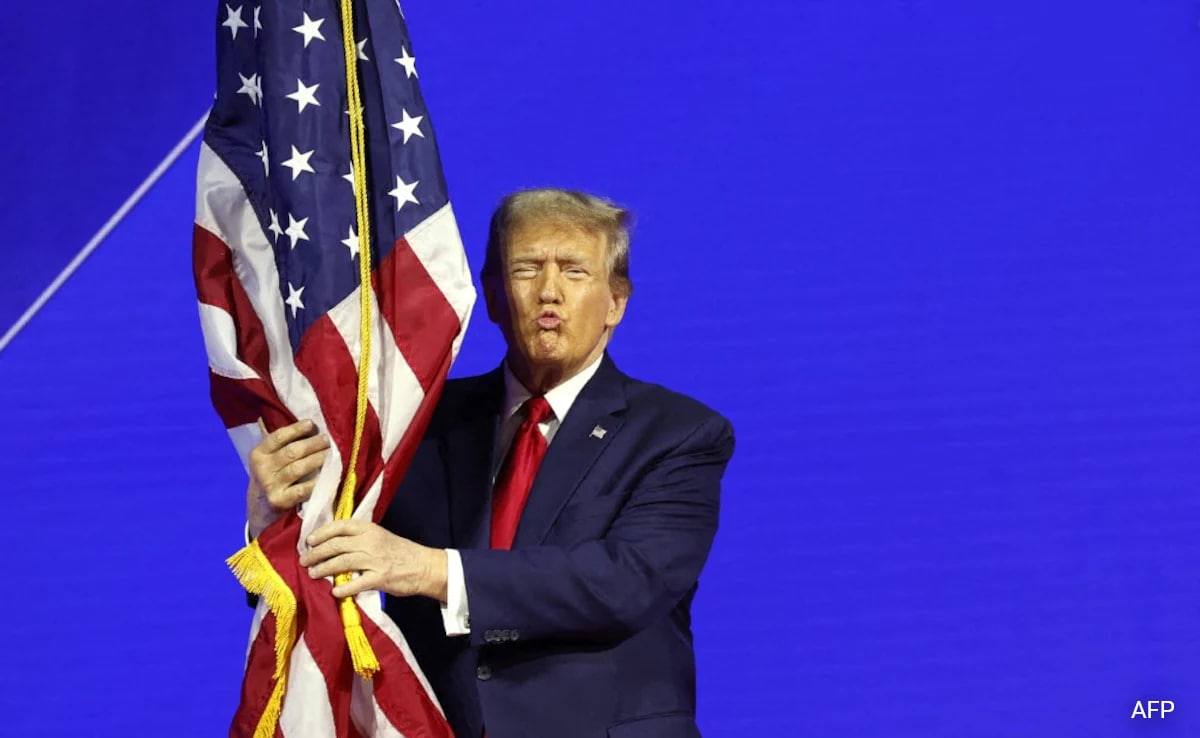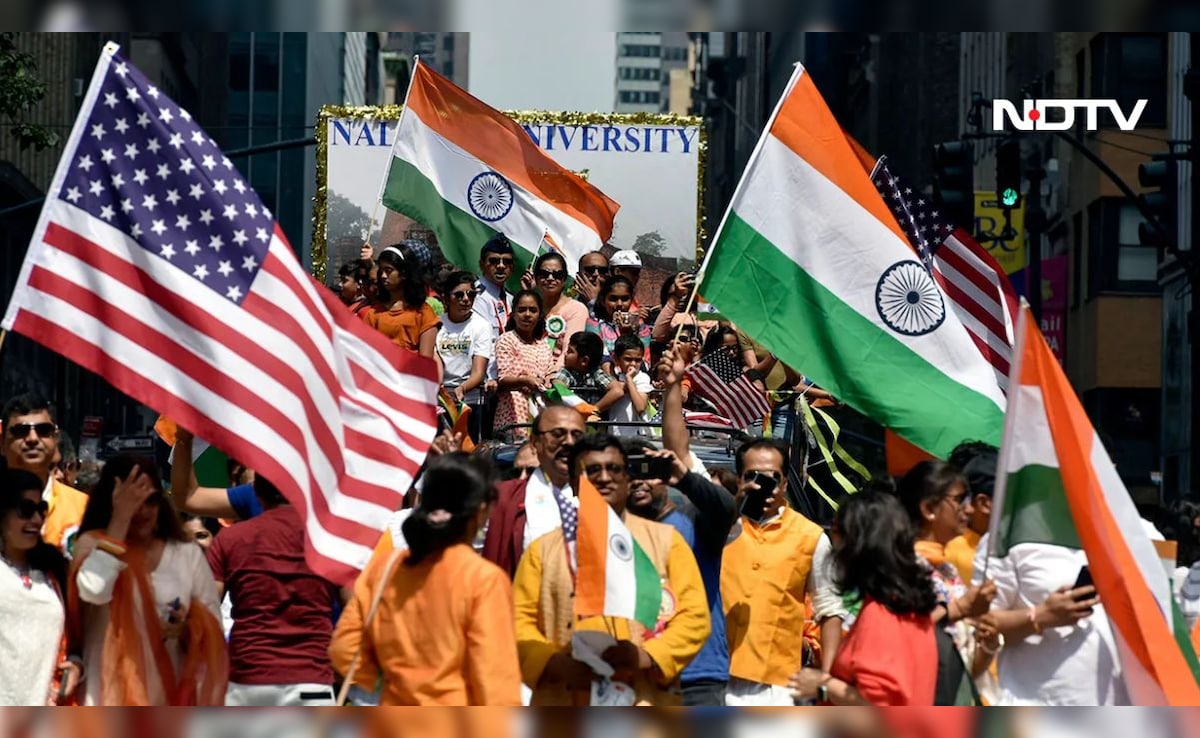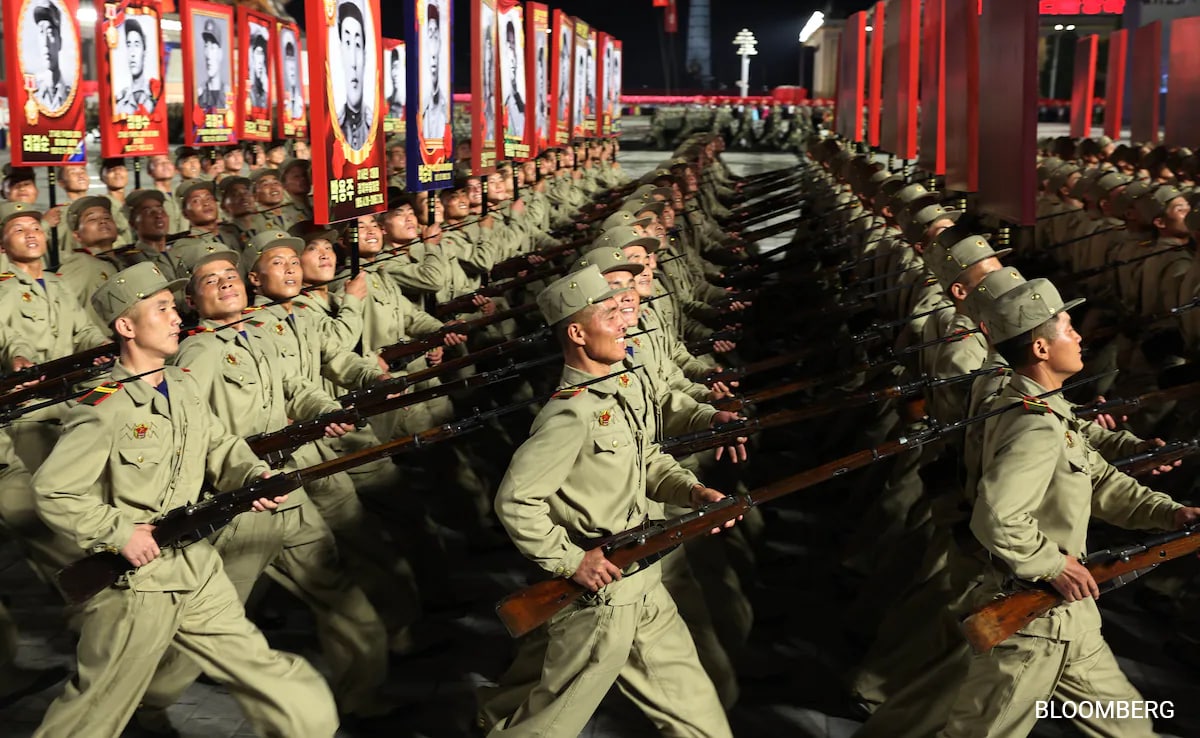While the North rolled out of its most provocative strategic weapons threatening Asian rivals and the American homeland during parades in January and last October, there was no immediate indication the latest parade showcased ballistic weapons.
Thursdayâs state media reports on the event that began late Wednesday indicated its message was aimed at a domestic audience instead of displaying the countryâs growing military might to the United States.
Experts say the toned-down event reflected the harsh challenges facing North Korea as its broken, mismanaged economy is further strained by unending U.S.-led sanctions, prolonged border closures because of the pandemic, and flooding that caused food shortages in recent years.
State media photos showed Kim â smiling widely and waving from a balcony toward troops and spectators at Kim Il Sung Square, which is named after his grandfather who founded the nation in 1948. But the reports didnât say if Kim made a speech during the event.
The Korean Central News Agency and the Rodong Sinmun newspaper published photos and reports of fighter jets flying in formation above the streets, and artillery pieces hauled by tractors. There were also marches of military search dogs and troops wearing gas masks and bright red hazmat suits.
There had been expectations that North Korea would show off missiles and other important weapons to pressure the Biden administration over the diplomatic freeze with the U.S. after Kim failed to leverage his arsenal for economic benefits during the Trump years.
But the latest parade shows that the North is too preoccupied with its domestic problems to attempt provocative messaging in foreign policy, said Hong Min, an analyst at South Koreaâs Institute for National Unification.
âThe parade shows that the government felt a need to build unity domestically â the population is clearly suffering amid the pandemic and social complaints are likely building up,â said Hong, who said it was highly unusual that the North would showcase its civil defense units in parade.
âNorth Korea needs to enforce military-like discipline while mobilizing its civilians in campaigns to rebuild the economy and areas damaged by floods. There arenât many ways for the leadership to encourage and motivate them, other then showcasing them on televised parades.â
Hong said it would be burdensome for the North to flaunt provocative weapons and create diplomatic frictions when it will have to rely on the outside world for coronavirus vaccines.
Seoulâs Unification Ministry said 2013 was the last time the North held a parade of the Worker-Peasant Red Guards, a national civil defense organization consisting of millions of North Koreans between the ages of 16 and 70, which could loosely be compared to military reserve forces of other countries.
The KCNA described Red Guards units from Pyongyang and other regions marching through the square in order and praised them for their supposedly huge contributions in anti-virus work, rebuilding communities destroyed by natural disasters and efforts to improve the economy.
The KCNA said Ri Il Hwan, a member of the ruling Workersâ Partyâs Politburo, did make a speech during the parade. He said the Northâs government will continue to strengthen defense capabilities and âfirmly defend the dignity and fundamental interests of our people and solve everything our own way with our own efforts on the principle of self-reliance.â
North Korea often celebrates major state anniversaries by displaying thousands of goose-stepping troops and its most advanced military hardware in parades at Kim Il Sung Square.
Previous nighttime parades were not aired live but a taped broadcast was shown on state TV hours later. The one overnight Wednesday and early Thursday was the third straight held at night â timed for spectacle.
Amid a stalemate in diplomacy with the U.S., Kim and his powerful sister have emphasized North Korea will boost its nuclear deterrent and preemptive strike capabilities while demanding that Washington abandon its âhostileâ policies â a reference to the U.S. maintaining sanctions and refusing to accept North Korea as a nuclear power.
But experts say Kim is facing perhaps his toughest moment as he approaches a decade in rule, with North Korea maintaining a border lockdown indefinitely to keep out the coronavirus and with no prospect in sight to end international sanctions.
.png)











 English (United States) ·
English (United States) ·  Turkish (Turkey) ·
Turkish (Turkey) ·